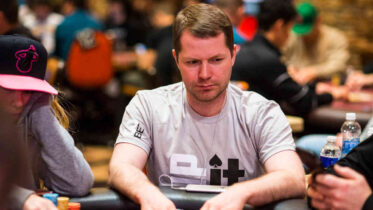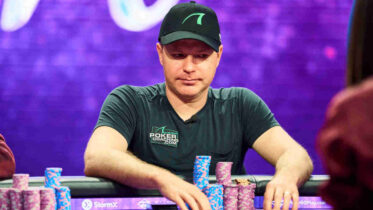Tournament poker has been at the height of its popularity in the last couple of years, with both online and live tournaments setting attendance records and proving that the game is alive and well.
For a long time now, MTTs have been the preferred poker format for many players, as the affordable buy-ins and potential for huge prizes have only become more appealing over the years.
However, it is worth noting that the quality of play in most poker tournaments worldwide has increased exponentially since the Poker Boom, making tournament poker strategy more important than ever.
Whether you are new to MTT poker or haven’t played a tournament in a while, this article was made for you, as it introduces some of the most important aspects of MTT poker strategy you need to know, whether you are playing freezeouts, re-entries, or PKOs.
- MTT Poker Tip #1 – Play Early Stages Like a Cash Game
- MTT Poker Tip #2 – Be Aware of Position at All Times
- MTT Poker Tip #3 – Defend Your Blind Often
- MTT Poker Tip #4 – Get Aggressive In Later Stages
- MTT Poker Tip #5 – Know Your Opponents
- MTT Poker Tip #6 – Practice ICM Scenarios
- MTT Poker Tip #7 – Learn How to Play Heads Up
- Putting It All Together
MTT Poker Tip #1 – Play Early Stages Like a Cash Game
Tournament poker and cash games are different in many ways, but the differences mostly come into play in the later stages of MTTs. As the tournament progresses and the stacks get shallower, the ICM starts to kick in, and your overall strategy must change to accommodate for all these differences.
Early on, however, there is little need to adjust your game in tournaments, as you will be playing with a hundred big blinds or more, which means you can comfortably play similarly to a cash game strategy.
In the early stages of an MTT, you will want to play quite tight from early positions, but loosen up in the late positions and make sure to 3-bet a range similar to the one you would in a cash game.
The 3-betting ranges in the early stages of MTTs will be more polarized, as you will want to have very strong hands and bluffs in your range, but avoid 3-betting medium strength hands that often flop weak one pair on the flop.
Overall, the early stages of a tournament will look very much like a cash game, so you should be careful not to stack off too lightly. There is no rush to build your stack too much in the early levels, so remain patient and play the hands you get without forcing the issue.
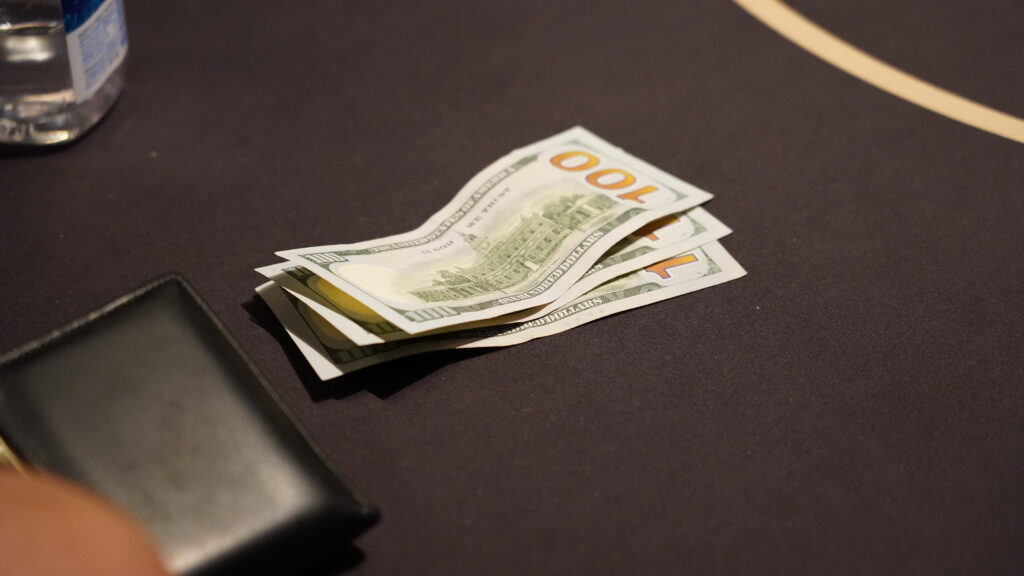
Due to the deep stacks you play with in cash games,
the same strategies can carry over to the early stages of tournaments.
MTT Poker Tip #2 – Be Aware of Position at All Times
Positional awareness is a key skill for any successful player. If you want to play a good MTT poker strategy, you will need to learn how to behave in different seats through the various stages of the tournament.
Throughout the entire MTT, you will always want to play tighter in early positions and looser in the late ones while also realizing that the small blind and big blind are two wildly different seats.
As the tournament progresses, you will want to adjust your cutoff and button ranges and steal as many blinds and antes as possible from those positions, both by opening unopened pots and by 3-betting against earlier position opens.
The big blind is the one unfavorable position from which you will get to play many hands, as the amazing price you will often get on defending will warrant quite a few calls.
Small blind, on the other hand, is a position from which you will not want to get too involved, and you will usually want to be 3-betting when you do to offset the positional disadvantage and eliminate the big blind from the pot.
There are many other tricks you will need to learn to apply in different spots, but the first trick is to always be aware of which position you are in, which position the player playing against you is in, and what that means for their and your respective ranges.

Make sure you know the names of all the relevant positions at the poker table.
MTT Poker Tip #3 – Defend Your Blind Often
In today’s MTT poker, the vast majority of players raise very small, with open raises between 2x and 2.5x accepted as the norm and used as a baseline. With that in mind, it is easy to see why defending the big blind quite a bit is important, as the odds you are getting to call such small raises is extremely favorable.
For example, imagine you are sitting in the blind with a stack of 80,000 chips, blinds at 1k/2k, and a 2k ante.
There is already 5k in the pot to start, and the button raises to 4.2k, bringing the total to 9.2k. You need to call only 2.2k to potentially win a pot of 11.4k, which means you only need about 20% equity to profitably call here.
The truth is that literally, any two cards have that much equity against a button opening range, which means you could call this raise with any two in theory.
However, your positional disadvantage means you should play a bit tighter than that, since you will not be able to realize all your equity on the flop.
Against late position opens, you will want to call with almost all suited hands and all reasonably connected off-suit hands, as well as ones with high cards like an Ace or a King, regardless of the other card.
As the opener’s position gets earlier, you will want to call less and less, but suited connectors, pairs, and off-suit Broadway hands should never be folded against a single raise in the big blind.
When it comes to 3-betting, construct a polarized range that’s made up of your strongest hands and some fairly weak bluffs while flat-calling everything in between.
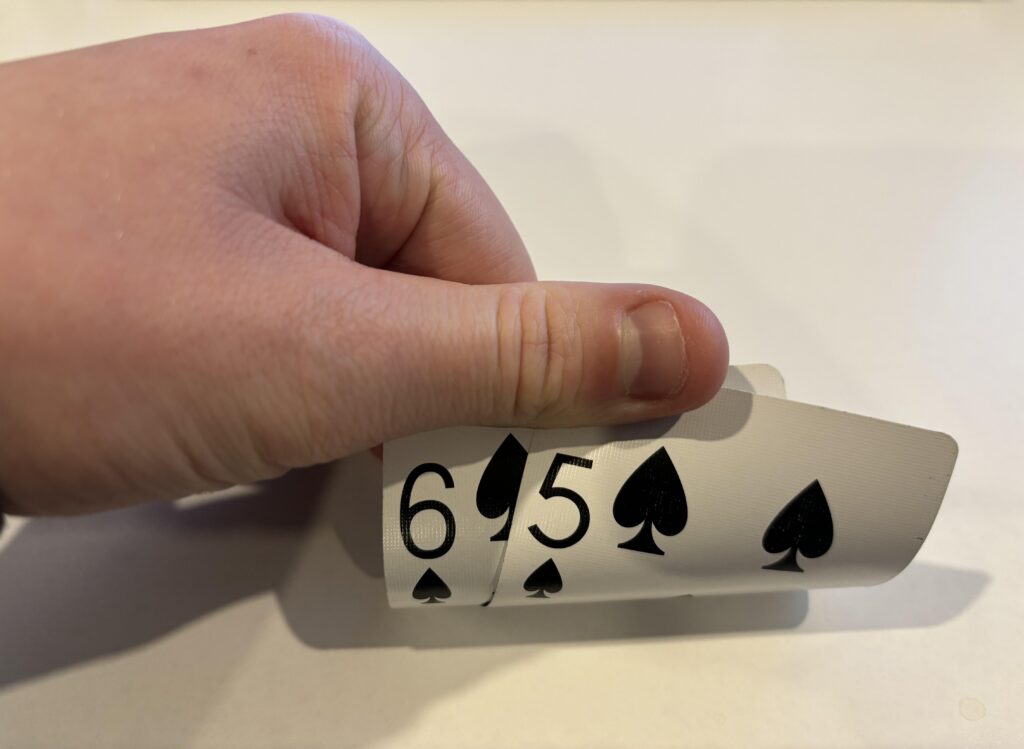
Even if you are initially “behind” the initial raiser,
hands like suited connectors are often worth defending your big blind with.
MTT Poker Tip #4 – Get Aggressive In Later Stages
As the tournament progresses into the later stages, you will want to ramp up the aggression quite a bit as stealing the blinds becomes more important.
In the early phase of an MTT, stealing 2.5bb with your 200bb stack won’t matter too much, but as your stack dwindles to 30bb and less, successful steals will become critical.
You will want to get particularly aggressive in later positions and steal chips from weak players who don’t defend their blinds enough, which is quite common, especially in lower-stakes tournaments.
Other than simply raising in unopened pots and stealing the blinds, you will also need to master the art of re-stealing, which, when successful, adds even more chips to your stack.
Sitting on a stack of 20 to 30 big blinds, you will want to find good hands to 3-bet bluff against mid and late position opens and force players to fold a good chunk of their opening range.
Against strong players who 4-bet a lot, you will want to use hands like A8s, K9s, or KQ, which aren’t quite good enough to call a raise with but block many strong opening hands and give you a good chance of getting a fold. If you face a 4-bet, simply fold these hands.
On the other hand, if you are playing against a soft player pool that calls many 3-bets but only 4-bet monsters, you will want to add weaker value hands like AQ, KQs, or 99 into your 3-betting range, looking for value more often and bluffing less often.

Do not be afraid to be aggressive, even if it means risking your stack!
MTT Poker Tip #5 – Know Your Opponents
GTO strategy has been floated a lot over the last few years, and while there are players who swear by it, the truth is that you don’t need to play GTO poker all the time to beat most MTT players.
Until you reach the highest levels of play, you will want to play exploitatively, as your opponents will make many critical mistakes you can capitalize on.
When you play a tournament, you should do your best to stay focused and be aware of how each player at your table plays in different situations.
By identifying which players are nits, maniacs, or solid regs, you will get a chance to make some plays that you would never be able to get away with in a vacuum.
For instance, identifying a nit will allow you to make some big folds when the player shows continued aggression. Despite having a good hand, you will know it is not good enough against this player.
Likewise, by knowing which players love to bluff off their stack too often, you will be in a position to stack them off even with mediocre-made poker hands or set a trap for them when you make a monster.
Each poker player plays differently, and knowing your opponents is the only way to effectively exploit their tendencies.
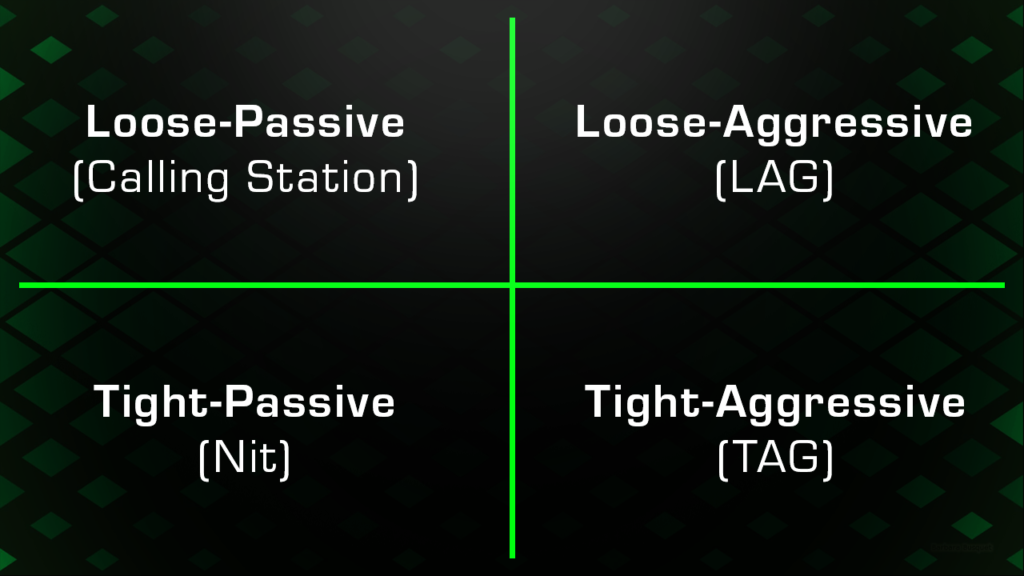
Learn how to spot common player tendencies and types with this helpful guide!
MTT Poker Tip #6 – Practice ICM Scenarios
The Independent Chip Model (ICM) is a mathematical model that determines the value of tournament chips in real dollars. It is one of the most useful tools for tournament poker.
Because every MTT has a payout structure that does not award all the money to the winner, the chips you stand to win in a tournament are never worth as much as they would be in a cash game.
For that reason, the value of chips is diminished over time, and as you reach the final table, it can be quite a bit lower than most players would expect.
With the ICM strategy, you will be able to calculate whether calling an all-in on the final table is a profitable play or not and whether you would do better by folding a hand and waiting for the next pay jump.
While this may sound like a cowardly strategy, the nature of MTTs dictates that taking the safe route is often the right play on the final table and in the bubble.
There is no real way to calculate ICM on the spot, so what you will need to do is use an ICM simulator and practice as much as possible to achieve mastery of common ICM scenarios, which you can then use in real tournament play.
The more proficient you become in ICM, the better results you will end up having on the final tables of MTTs, and the higher your overall ROI will get over time.
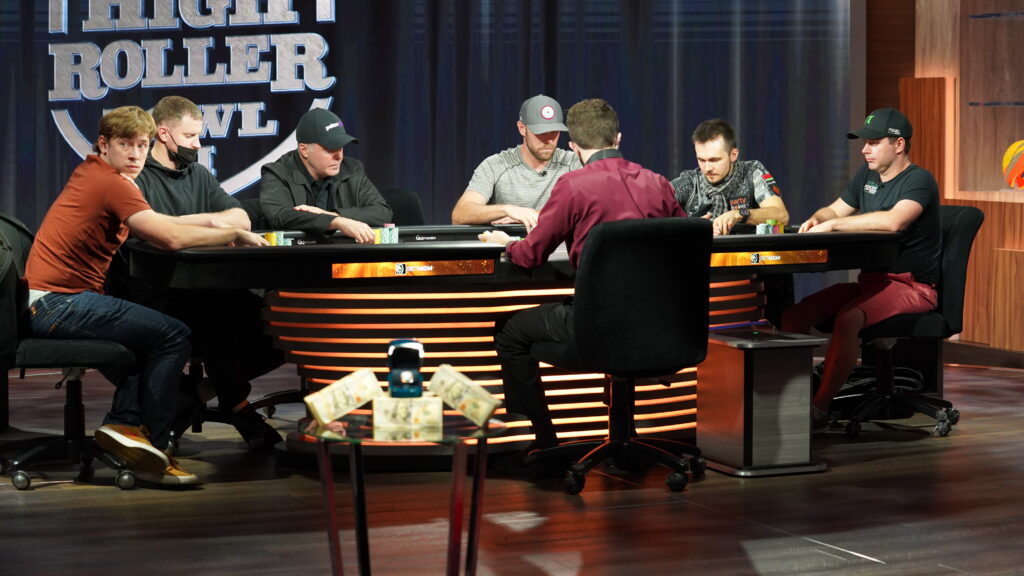
It is never more important to consider ICM than when at the final table.
MTT Poker Tip #7 – Learn How to Play Heads Up
Payouts in poker tournaments are often quite top-heavy, and as a tournament player, you will find yourself playing some very big heads-up matches now and then.
For that reason, you must have a good grasp of heads-up play and be ready to play one-on-one when the time finally comes.
When the heads-up match starts, all ICM goes out the window, and you are playing a classic death match with a certain amount of money on the line. Often, the heads-up match will be for hundreds of your average buy-ins, which is why you need to be sure that you have a handle on the situation before you get there.
If you master heads-up play in advance, you will often find yourself playing against a significantly inferior opponent, as many tournament players are not very strong in these situations.
However, you definitely don’t want to be on the other side of that medal and be the one looking to get lucky to stack your opponent.
Make sure to study the heads-up strategy at least a bit and fire up some smaller stakes heads-up games in between your tournament sessions to make sure your heads-up game is not too rusty when the time finally comes. You can grab our poker cheat sheet as well.
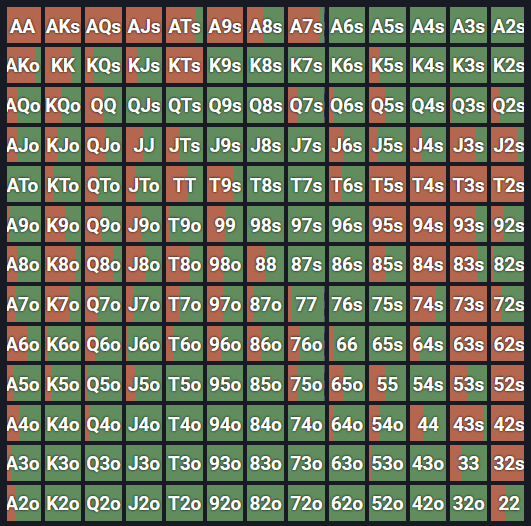
Be sure to check out the heads-up tournament charts recently added to PokerCoaching.com!
Putting It All Together
The truth is that being a good MTT poker player these days is not easy. It takes lots of studying, focus, and dedication.
The basic skills discussed in this guide are only some of the keys to a strong tournament strategy, but mastering them will give you a strong foundation and a big edge over an average tournament field.
As you learn each of these skills to a certain level, remember to play to your strengths and avoid getting too fancy in spots you are not sure of. Instead, do what you do well over and over again, and the results will follow.
For the time being, avoid playing too high, study your tournament game between sessions, and try to improve in areas that often get you into trouble to eliminate your biggest mistakes and grow as a player as fast as possible.


